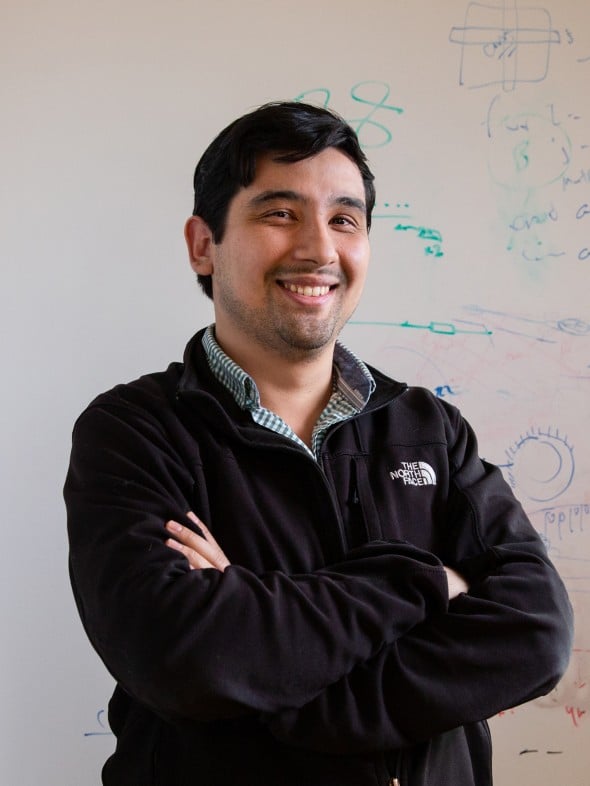
Jason Buenrostro
31
Harvard University
Country of birth: US
A tinkerer figures out how to tell which genes are active inside a cell
After Jason Buenrostro graduated from Santa Clara University with a degree in biology and engineering, he went to work in a lab at Stanford, overseeing an $800,000 gene sequencing machine.
He wanted to understand the effects of the genetic mutations his machine detected. But many of the mutated genes he found were considered junk because they didn’t direct the production of proteins. So in his graduate research at Stanford, he pivoted to developing methods for measuring these underexplored regions.
DNA is essentially identical from cell to cell, but a kidney cell differs from a brain cell in the activity of those genes. Regions of DNA need to be tightly wound to fit inside the nucleus, and only open DNA regions can be active.
Buenrostro and his colleagues developed a tool called ATAC-seq to measure these open regions of the genome, many of which don’t make proteins but regulate genetic activity. “I didn’t realize how useful [a tool] it would be for people. It kind of exploded,” says Buenrostro, noting that ATAC-seq now has its own Wikipedia page.
More recently, Buenrostro has further developed the technology to identify open DNA at the level of a single cell. With this tool, researchers can determine which genes are active in single cells, studying how these cells sometimes develop into cells of new types, and how some functions go awry in disease.
Buenrostro wants to use these methods to learn new basic information about the differences between healthy and diseased cells and to use this information to engineer new behaviors into cells as they develop and mature.
Buenrostro, who now oversees a lab of 10, says, “I want to understand cell fate decisions to ultimately be able to engineer cells to do whatever I would like them to”—for instance, fighting cancer.
